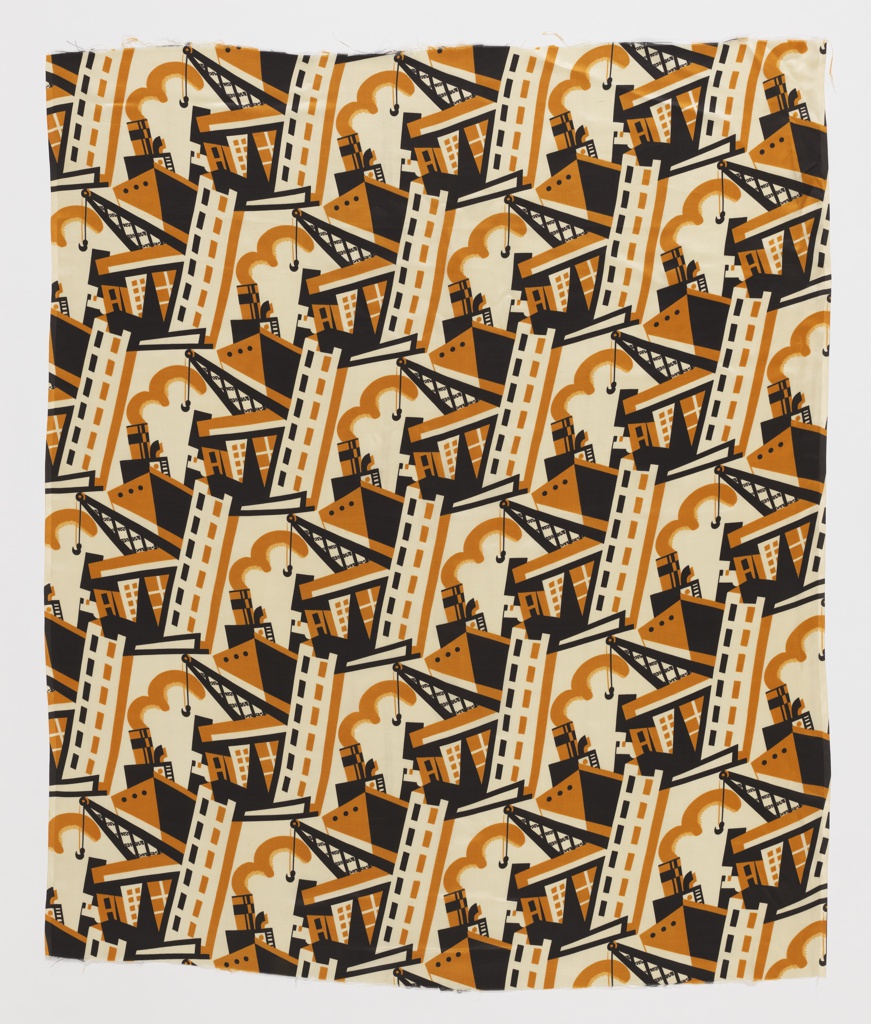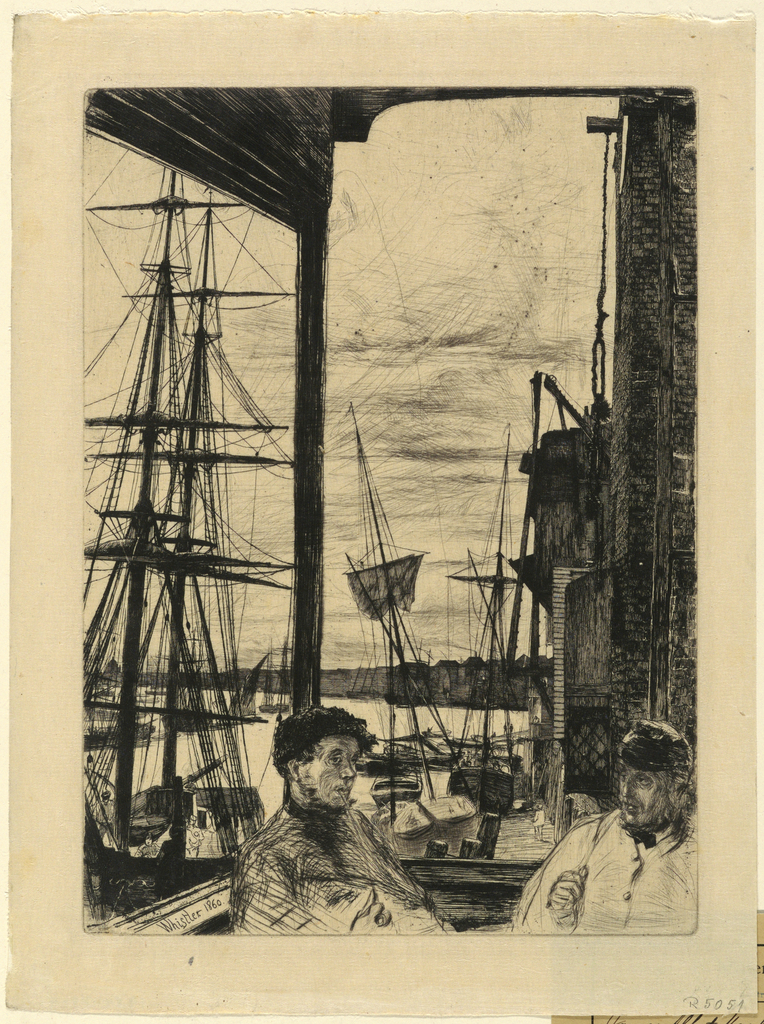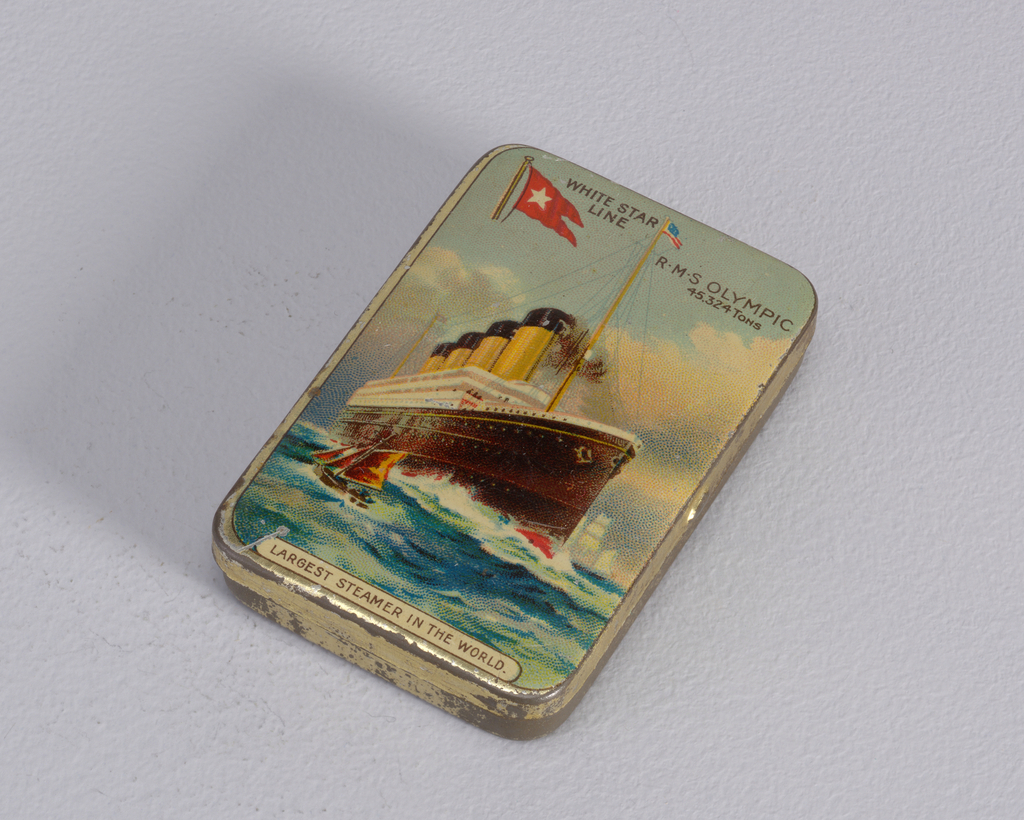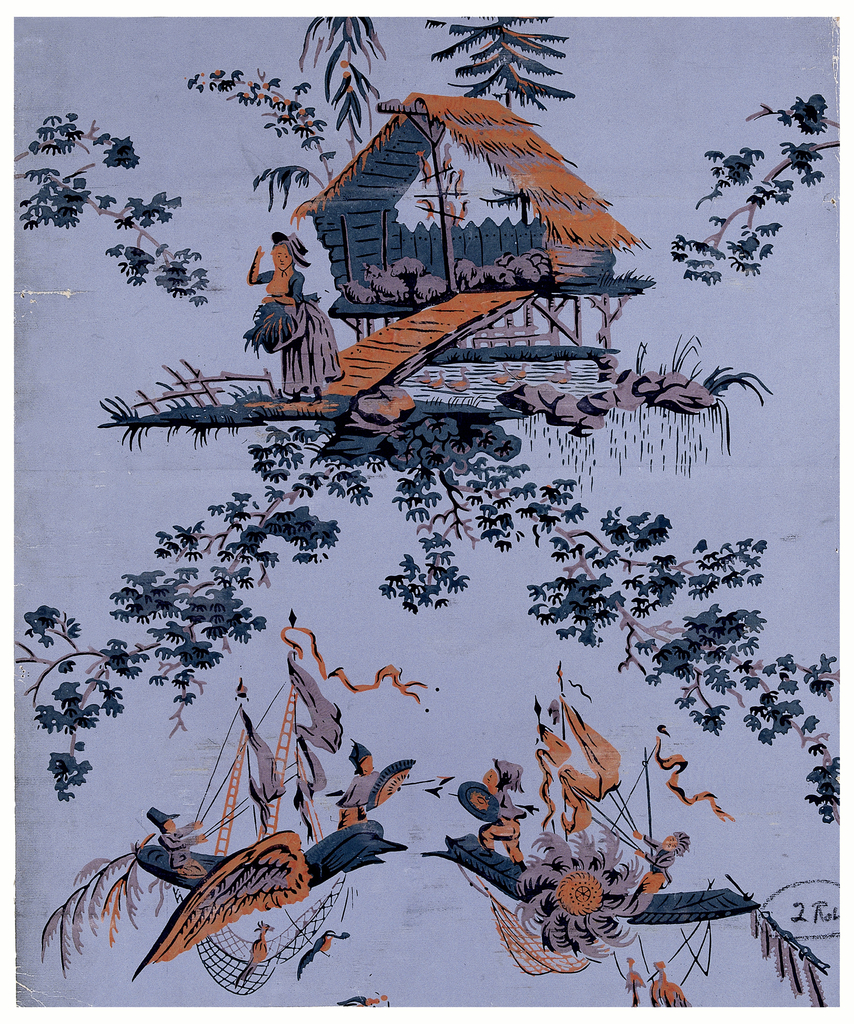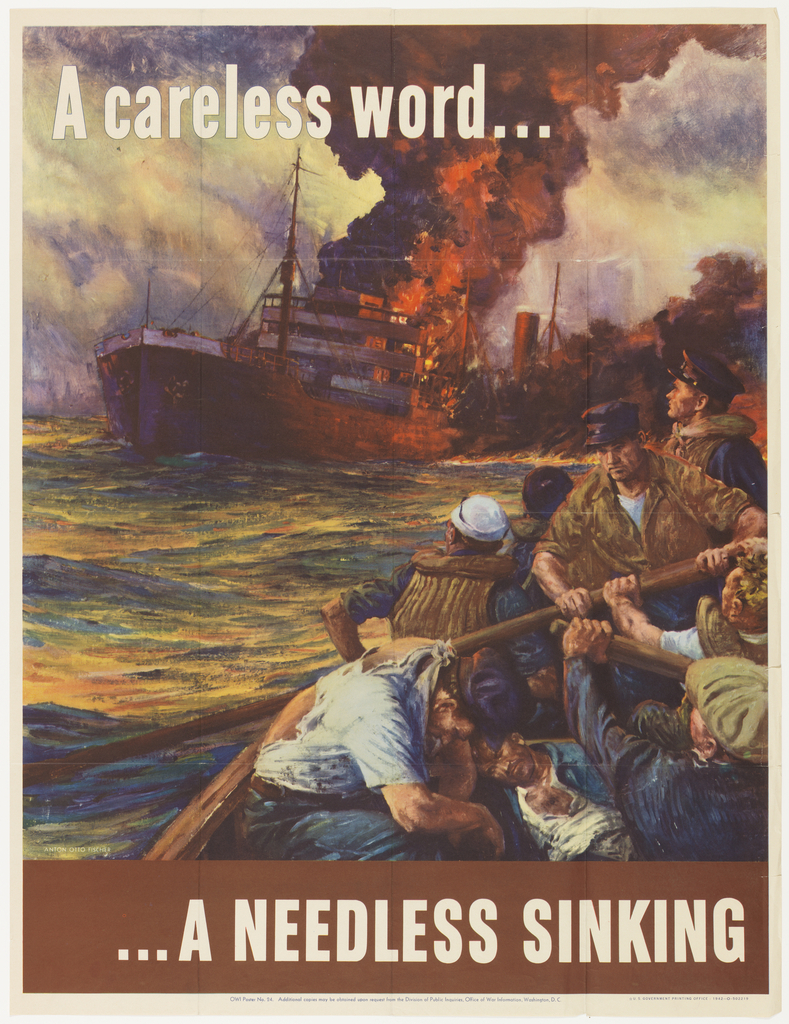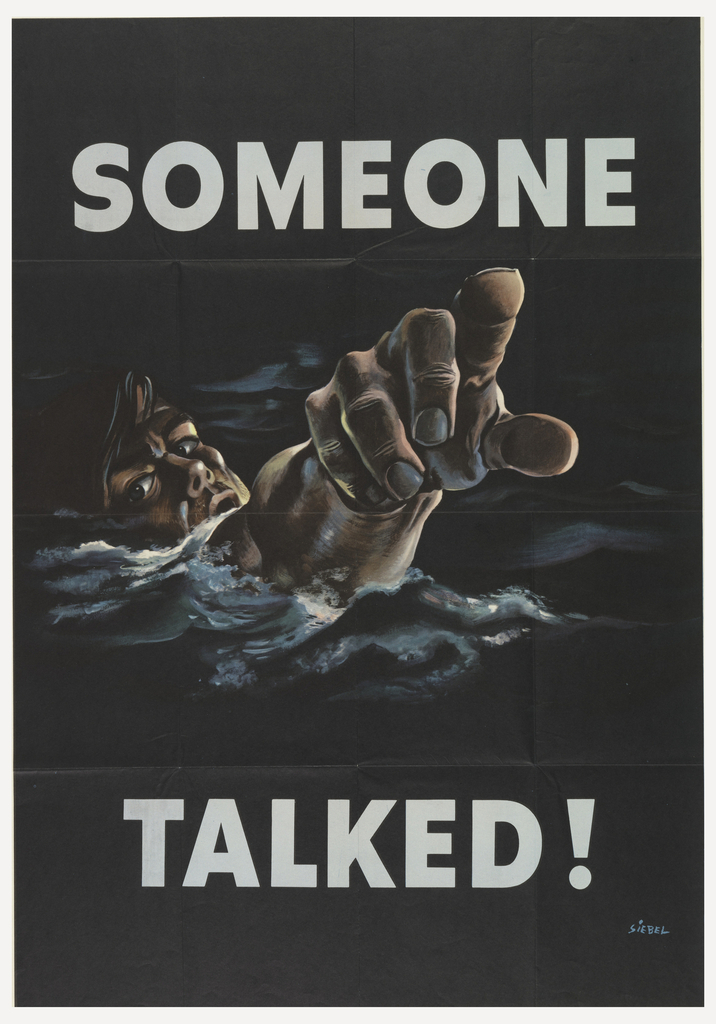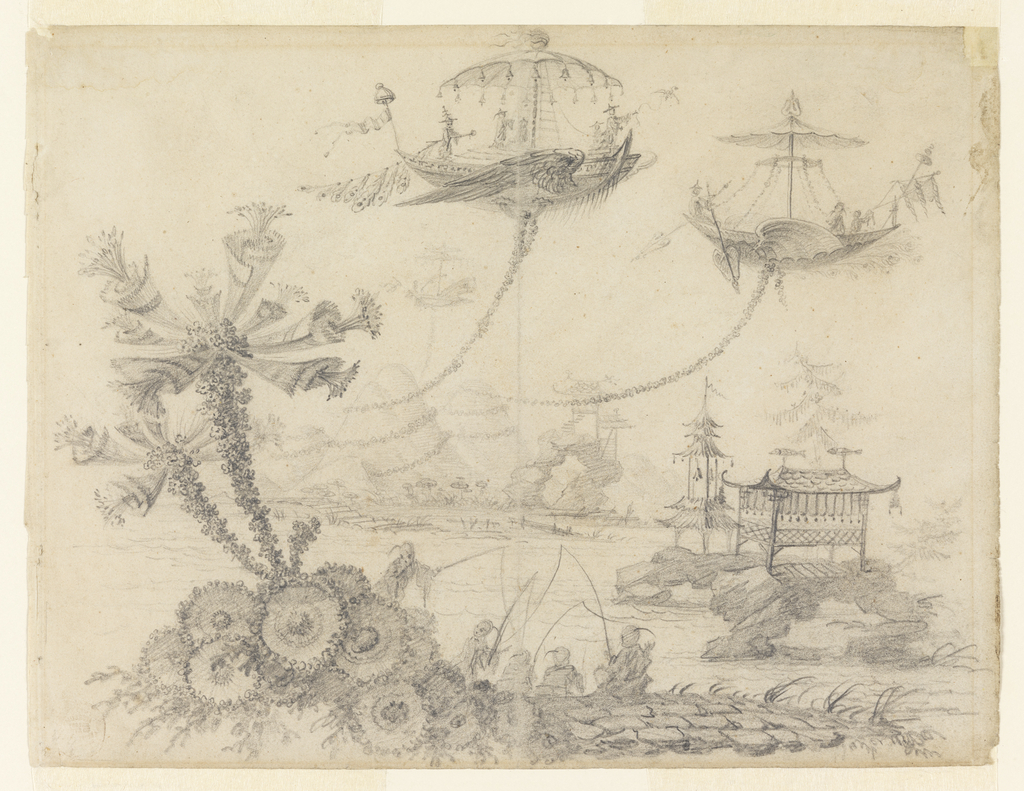This Constructivist-inspired textile likely was produced in the United States during the mid-to-late 1920s. The designer is presently unknown, but presumably was an individual familiar with Russian Constructivist design principles, which took inspiration from the industrial world. Printed in dark yellow and black on creamy off-white silk satin, the textile has an overall design of...
This print by James Abbott McNeill Whistler is part of a series of images the artist produced depicting the East London neighborhoods of Rotherhithe and Wapping in 1859–60. While English painters had traditionally avoided portraying these industrial districts of the city throughout the nineteenth century, Whistler’s Thames series takes for subject the city’s poorest workers...
Before the age of safety matches, matchbooks, and lighters, was the age of delicately intricate or simply functional matchsafes. Known as ‘vesta cases’ in Britain for their association with Vesta, the Roman goddess of fire and the hearth, matchsafes reigned as king when early friction matches were considered highly combustible and unreliable. To avoid the...
This paper catches the eye with its unusual orange, grey, and dark green color scheme and unusual imagery. The paper seems to contain two very distinct vignettes. In the upper part of the paper, there is a genre scene of a peasant woman and a barn on stilts beside a brook. There are numerous picturesque...
It seems only fitting that Anton Otto Fischer, an artist best known for seascapes, began his career working on merchant vessels and steam ships. After immigrating to New York, Fischer assisted the American illustrator A.B. Frost. This experience led Fischer to pursue an education in Paris, where he developed his personal design aesthetic. Fischer’s 1942...
During World War II, poster competitions were held to solicit designs, under particular themes, to assist in the war effort. This poster, designed by Frederick Siebel, was submitted to alert Americans to the urgency of national security. For this contest each poster was subject to the scrutiny of First Lady Eleanor Roosevelt, who acted as...
Ships, precariously tethered to mountain tops by garlands, hover over a landscape of pure fantasy in this graphite drawing by the French artist Jean-Baptiste Pillement (1728-1808). Pillement was known for his imaginative prints featuring chinoiserie designs that were in essence European variants of Japanese and Chinese motifs. Pillement was a prolific artist who operated in...
